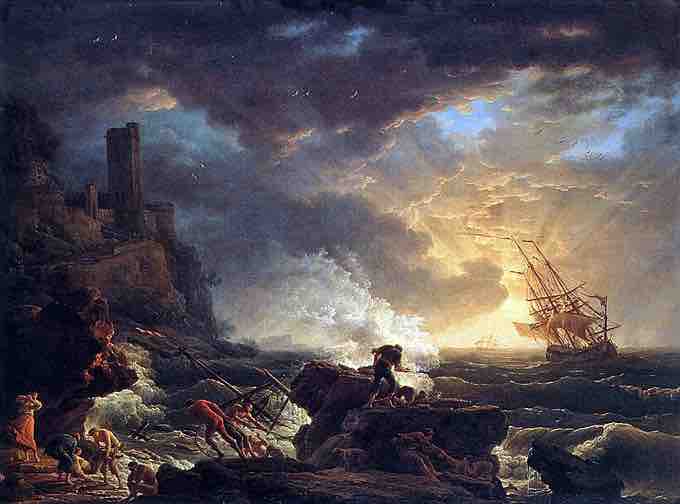Overview
Romanticism was an artistic, literary, and intellectual movement that originated in Europe toward the end of the 18th century. In most areas the movement was at its peak in the approximate period from 1800 CE to 1840 CE. Romanticism reached beyond the rational and Classicist ideal models to elevate a revived medievalism.
The Influence of the French Revolution
Though influenced by other artistic and intellectual movements, the ideologies and events of the French Revolution created the primary context from which both Romanticism and the Counter-Enlightenment emerged. Upholding the ideals of the Revolution, Romanticism was a revolt against the aristocratic social and political norms of the Age of Enlightenment and also a reaction against the scientific rationalization of nature. Romanticism elevated the achievements of what it perceived as heroic individualists and artists, whose pioneering examples would elevate society. It also legitimized the individual imagination as a critical authority, which permitted freedom from classical notions of form in art.
The Passion of the German Sturm und Drang Movement
Romanticism was also inspired by the German Sturm und Drang movement (Storm and Stress), which prized intuition and emotion over Enlightenment rationalism. This proto-romantic movement was centered on literature and music, but also influenced the visual arts. The movement emphasized individual subjectivity. Extremes of emotion were given free expression in reaction to the perceived constraints of rationalism imposed by the Enlightenment and associated aesthetic movements.
Sturm und Drang in the visual arts can be witnessed in paintings of storms and shipwrecks showing the terror and irrational destruction wrought by nature . These pre-romantic works were fashionable in Germany from the 1760s on through the 1780s, illustrating a public audience for emotionally charged artwork. Additionally, disturbing visions and portrayals of nightmares were gaining an audience in Germany as evidenced by Goethe's possession and admiration of paintings by Fuseli, which were said to be capable of "giving the viewer a good fright. " Notable artists included Joseph Vernet, Caspar Wolf, Philip James de Loutherbourg, and Henry Fuseli.

Shipwreck by Claude Joseph Vernet, 1759
Vernet participated in the proto-Romantic Sturm und Drang movement.
The Industrial Revolution also had an influence on Romanticism, which was in part an escape from modern realities of population growth, urban sprawl, and industrialism. Indeed, in the second half of the 19th century, "Realism" was offered as a polarized opposite to Romanticism.